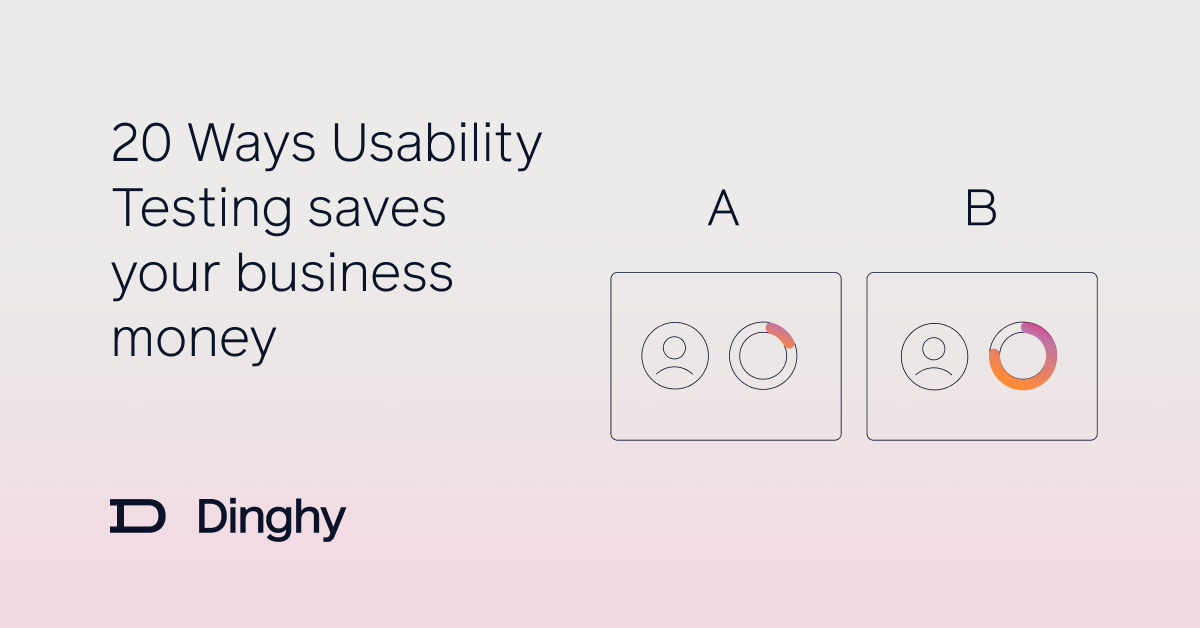- Business
- User Research
- Strategy
- User Testing
The Hidden Gold Mine: 20 Ways User Testing and Research Saves Businesses Money


In the fast-paced world of startups and established businesses alike, the pursuit of profit often overshadows the importance of understanding one key aspect: the user. Many founders and CEOs may view user testing and research as optional luxuries, reserved for big-budget corporations. However, this couldn't be further from the truth. In fact, investing in user testing and research isn't just a smart move; it's a money-saving strategy that can propel your business to success. Here are 20 compelling reasons why:
Minimize Product Failures
By gathering insights from user testing and research, you can identify flaws and areas for improvement early in the development process, saving the substantial costs associated with fixing errors post-launch.
Enhance Product-Market Fit
Understanding your users' needs and preferences allows you to tailor your product or service to better align with market demands, increasing its appeal and reducing the risk of market rejection
Reduce Development Costs
Iterating based on user feedback is like to taking a test drive before committing to a long journey. It allows you to course-correct early on, ensuring that you're heading in the right direction before investing significant resources into development. Usability testing reduces the likelihood of costly redesigns and redevelopments, ultimately saving you time and money in the long run.
Avoid Costly Rebrands
User research serves as the compass guiding your brand's identity, ensuring alignment with your audience's preferences and values from the outset. By intimately understanding your users' needs, behaviors, and perceptions, you can craft a brand identity that resonates authentically with them. This preemptive alignment prevents costly missteps and incongruences that could necessitate expensive rebranding efforts in the future.
Increase Customer Lifetime Value
By prioritizing user testing and research to ensure that your product meets and exceeds customer expectations, you cultivate a loyal customer base that is more likely to return for future purchases and recommend your brand to others. This not only reduces the need for costly customer acquisition efforts but also amplifies the impact of your marketing efforts, as satisfied customers become enthusiastic brand advocates, further extending your reach and driving sustained revenue growth over time.
Optimize Marketing Spend
User insights enable you to refine your marketing strategies and target your efforts more effectively, ensuring that your advertising budget is spent on channels and messages that resonate with your audience.
Boost Conversion Rates
By analyzing how users interact with your website or app, you can pinpoint pain points, optimize navigation, and refine content to create a seamless user journey. This optimization enhances user satisfaction, fosters trust, and ultimately leads to higher conversion rates and increased sales. Investing in user experience not only boosts your bottom line but also cultivates loyalty, as satisfied customers are more likely to return and recommend your platform to others.
Decrease Customer Support Costs
Addressing common pain points identified through user testing can result in fewer customer complaints and support inquiries, saving resources spent on customer service.
Mitigate Legal Risks
Identifying and rectifying usability issues, such as accessibility concerns, early on is crucial not only for enhancing user experience but also for mitigating legal risks. Ensuring that your website or app is accessible to all users, including those with disabilities, not only aligns with ethical principles but also helps you avoid potential legal disputes or regulatory fines. By proactively addressing accessibility issues during the development phase, you demonstrate a commitment to inclusivity and compliance with accessibility standards, safeguarding your business from legal liabilities and reputational damage in the long run.
Strengthen Investor Confidence
Demonstrating a thorough understanding of your target market and a commitment to user-centric design can instill confidence in investors, making it easier to secure funding for future growth.
Accelerate Time to Market
Rapid iteration based on user feedback allows you to bring your product to market faster, gaining a competitive edge and capturing market share ahead of slower-moving competitors.
Reduce Churn Rates
By continually meeting and exceeding user expectations, you can decrease churn rates and retain more customers over time, saving on the costs associated with acquiring new ones.
Identify Untapped Markets
User research can uncover new market segments or niche opportunities that you may have overlooked, expanding your potential customer base and revenue streams.
Inform Pricing Strategies
Understanding the value proposition of your product to users helps you set pricing that maximizes profitability while remaining competitive in the market.
Improve Product Scalability
Anticipating user needs and scalability challenges early on allows you to design a product infrastructure that can grow with your user base, minimizing costly infrastructure overhauls in the future.
Reduce Product Returns and Refunds
Addressing usability issues or mismatches between user expectations and product features can result in fewer returns and refunds, preserving revenue and customer satisfaction.
Enhance Employee Efficiency
Providing employees with insights into user needs and pain points enables them to make more informed decisions and prioritize efforts that directly impact user satisfaction, leading to greater productivity and cost-effectiveness.
Optimize Product Features
User feedback guides feature prioritization, ensuring that development efforts are focused on the most valuable enhancements that resonate with users, rather than wasting resources on unnecessary features.
Facilitate Agile Decision-Making
By providing concrete insights into user preferences and pain points, it streamlines decision-making processes, mitigating the need for prolonged debates or indecision. With access to real-time data, teams can swiftly align their strategies and priorities based on user feedback, ensuring that everyone is working towards a common goal. This not only accelerates the development cycle but also optimizes resource allocation, as decisions are grounded in empirical evidence rather than subjective opinions. Ultimately, by fostering stakeholder alignment through user feedback, you minimize friction, maximize efficiency, and drive collective progress towards delivering a product that truly resonates with your target audience.
Cultivate a Culture of Innovation
Prioritizing user testing and research fosters a culture of continuous improvement and innovation within your organization, positioning you for long-term success in a rapidly evolving market landscape.
In conclusion, user testing and research are not just cost centers; they are strategic investments that can yield substantial returns by saving you money across various aspects of your business operations. By prioritizing user-centricity and leveraging insights from your target audience, you can optimize your products, services, and processes to drive efficiency, profitability, and sustainable growth.

